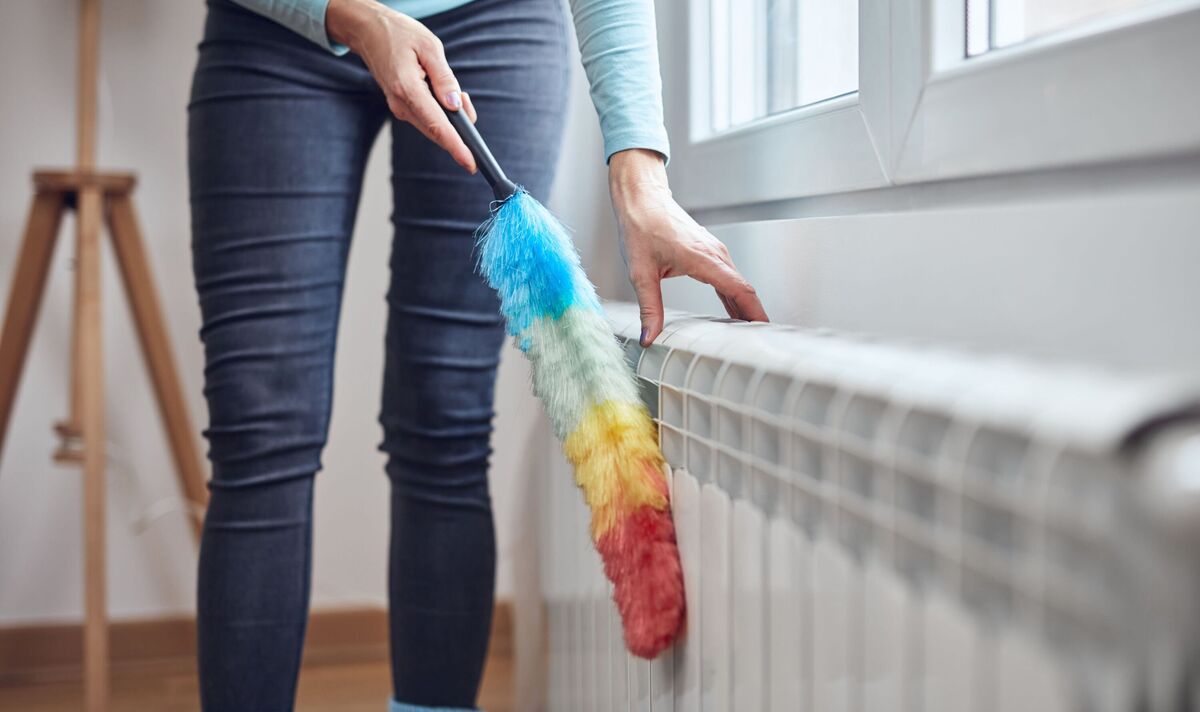
Although the festive period is coming to an end, winter is only just beginning. With that comes cold weather and anxiety about the rising costs of heating bills.
The average gas central heating bill – based on Ofgem’s average gas and electricity usage for a direct debit two to three-bedroom house – now stands at £900 a year.
With the cost of living rising, households across the country are looking for ways to maximise the efficiency of their central heating.
Research conducted by Which? suggests that by keeping your radiator system clean could save you up to 25 percent off your bills, or around £225 a year.
Radiators may appear awkward or daunting to clean properly, but Nancy Emery, a cleaning expert at Tap Warehouse, has shared a simple cleaning hack that every household can use to make their heating more efficient.
“One of the quickest ways to make your heating more efficient is to keep radiators clean and dust free. The dust and dirt that collects on your radiators over time not only looks unsightly but can also affect the efficiency and heat output,” she explained.
“It’s important to regularly clean your radiator to ensure it is heating up as it should, but also to prevent mould and damp forming on walls, around radiator pipes and around windows and doors.
“Keeping radiators free of dust and dirt build-up will ensure they heat up as they should and are not working harder than they need to to keep your house warm. This is going to save you money on your heating bills which is something we can all benefit from.
“Many people forget to clean inside and behind radiators as well as the front, which is where most of the dust can settle,” the cleaning expert continued.
The standard technique to clean a radiator is to use a long radiator brush to ensure all the dirt is removed from the inside, then brush around and behind the radiator to ensure it is dust free.
However, if you struggle to completely remove the dust from behind the radiator with a brush, Nancy recommends using a hairdryer to blow it out.
She said: “We would recommend laying an old sheet or towel down first to collect all the dust as it comes out. Then simply point the nozzle of the hairdryer down the back of the radiator along the wall and give it a good blow – you’ll find having the hairdryer on the highest setting should force all the dirt and dirt free.
“Once you have done this you can pick up the sheet and dispose of the debris in the bin and then vacuum in and around the radiator to ensure you have it all.
“During winter, it is best to try and complete this task once a week because there tends to be more dust that settles as we don’t open windows as often.”
Another thing you can do to improve the efficiency of your radiator is to clean the outside of it once a week with warm, soapy water and a soft sponge.
This act of cleaning alone won’t save you hundreds of pounds on your bills, but combining it with other radiator cleaning checks and methods can contribute to better savings.
It’s important to bleed your radiators to remove any trapped air, which improves the overall heating performance and ensures that less energy is required for your radiators to reach your desired heat.
“You should also make sure that you clean your radiator system which is making sure that the water that lives in the pipes is clean and free of sludge. This not only increases efficiency but also helps to maintain a healthy boiler,” Nancy added.
“If you notice cold spots at the bottom of your radiator or they seem to take longer than usual to heat up then this is a clear sign you have sludgy pipes that need flushing out.
“This gets rid of any dirt and rust that has accumulated which limits the flow of water around your radiator and reduces its performance.
“You can flush a radiator yourself using a hose and outside water source, but this involves removing and reconnecting the radiator. If this is something you’re not comfortable with then ask a professional to help.”
However, if you are willing to flush your radiator yourself, Nancy provided some step-by-step guidance to ensure you’re flushing your radiator effectively.
“To properly flush a radiator, you’ll have to empty all of the water from inside by opening the valves and letting it drain out into a bucket, tub or bowl. It’s best to lay some old towel down before doing this to catch any spills or leaks. Then you need to completely remove the entire appliance from the wall,” she explained.
“Once you have it outside, you can place a hose onto the pipe inlet and run the water through to flush out any sludge inside. You can move the hose to the inlet on the other side and continue rinsing until the water coming out of the other end is clear.
“Once you’ve finished flushing out your radiator, you’ll then need to reconnect the radiator.”







